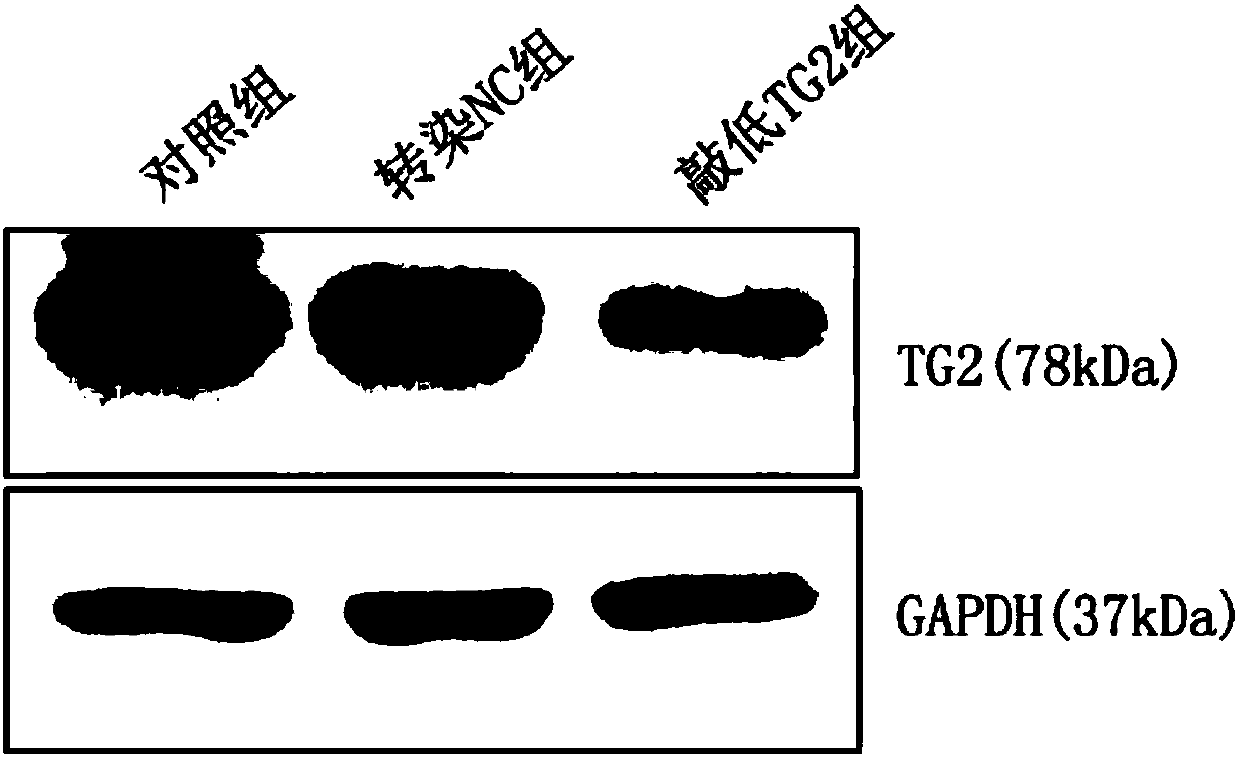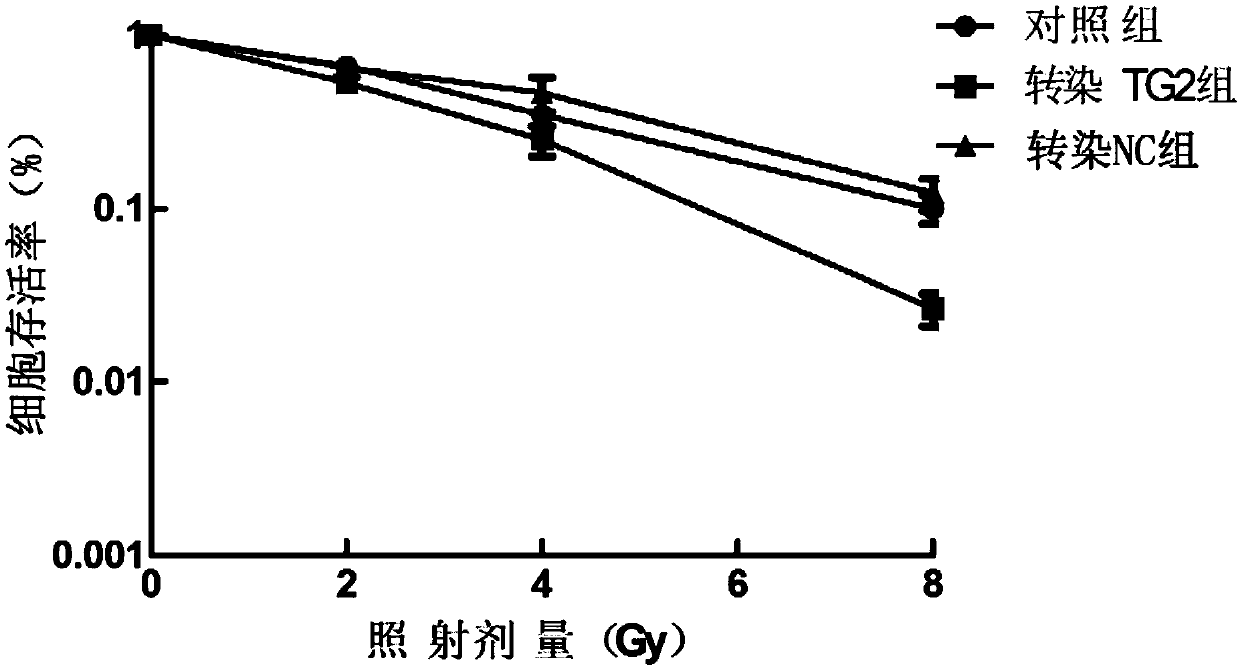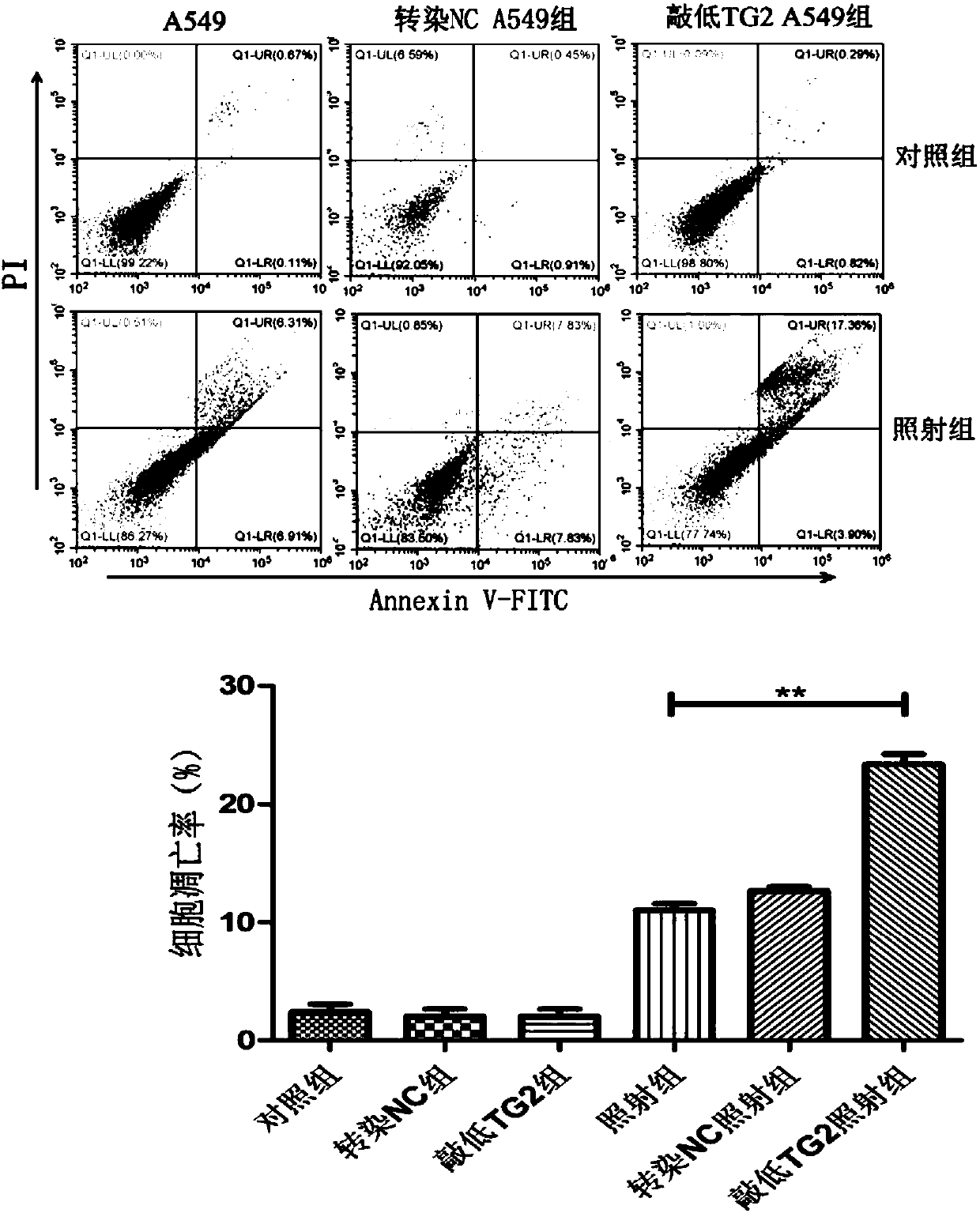Application of reagent for restraining or reducing TG2 gene expression in preparation of tumor radiotherapy sensitivity-enhancing medicine
A tumor radiotherapy and gene expression technology, applied in the direction of anti-tumor drugs, drug combinations, pharmaceutical formulations, etc., can solve the problems of no one reporting
- Summary
- Abstract
- Description
- Claims
- Application Information
AI Technical Summary
Problems solved by technology
Method used
Image
Examples
Embodiment 1
[0030] (1) Cell culture: A549 cells were cultured in DMEM medium containing 10% fetal bovine serum; the cells were placed at 37°C, 5% CO 2 Cultured in an incubator, subcultured every 2-3 days, and the cells in the logarithmic growth phase were used for experiments.
[0031] (2) Cell transfection: The day before transfection, the cells were digested with trypsin, counted, inoculated in a 6-well plate at an appropriate density, and placed in CO 2 Cultivate overnight in an incubator, so that the confluence of the cells on the day of transfection is 70%-90%. Avoid antibiotics during plating and transfection.
[0032] Preparation of transfection solution: The dosage ratio of plasmid: Lipofectamine3000 is 1 μg / well: 1.5 μl / well. Add 250 μl Opti-MEM medium to 500ng / well DNA and 5 μl / well P3000 and mix well, let it stand at room temperature for 5 minutes, and set aside; add 3.75 μl / well Lipofectamine3000 to 250 μl / well Opti-MEM medium, mix well, let stand at room temperature for 5 m...
Embodiment 2
[0035] (1) Cell culture and cell transfection are the same as in Example 1;
[0036] (2) Cell clone formation method: Take A549 cells in logarithmic growth phase and A549 cells transfected with TG2siRNA and NC sequence for 72 hours, and inoculate different numbers of cells into six-well plates according to different irradiation dose requirements (0,2,4, The number of cells inoculated with 8Gy dose was 200, 400, 800 and 1600, respectively). The three groups of cells were irradiated with different doses (0-8Gy) of γ-rays at the same time, and continued until the cell clones visible to the naked eye appeared in the culture dish, and the culture was terminated. The medium was discarded, washed twice with PBS, fixed with anhydrous methanol for 30 minutes, stained with Gimsa stain for 30 minutes, rinsed with running water, dried and counted to calculate the cell survival rate. The result is as figure 2 As shown, with the increase of irradiation dose, the cell death rate of A549 c...
Embodiment 3
[0038] (1) Cell culture and cell transfection are the same as in Example 1;
[0039] (2) Cell apoptosis detection by flow cytometry: A549 cells in the logarithmic growth phase and A549 cells transfected with TG2siRNA72h and NC sequences (1×10 5 / mL) were inoculated into six-well plates, and three groups of cells were given 8Gy 60 After irradiating with Coγ-rays and continuing to culture for 24 hours, the cells were digested with EDTA-free trypsin, washed three times with PBS after centrifugation at 1500 rpm for 5 minutes, and cell apoptosis was detected by flow cytometry after double staining with AnnexinV-FITC and PI. The result is as image 3 As shown, the apoptosis rate of A549 cells transfected with TG2siRNA was significantly higher than that of the normal A549 cell group and the A549 group transfected with NC.
PUM
 Login to View More
Login to View More Abstract
Description
Claims
Application Information
 Login to View More
Login to View More - R&D Engineer
- R&D Manager
- IP Professional
- Industry Leading Data Capabilities
- Powerful AI technology
- Patent DNA Extraction
Browse by: Latest US Patents, China's latest patents, Technical Efficacy Thesaurus, Application Domain, Technology Topic, Popular Technical Reports.
© 2024 PatSnap. All rights reserved.Legal|Privacy policy|Modern Slavery Act Transparency Statement|Sitemap|About US| Contact US: help@patsnap.com










